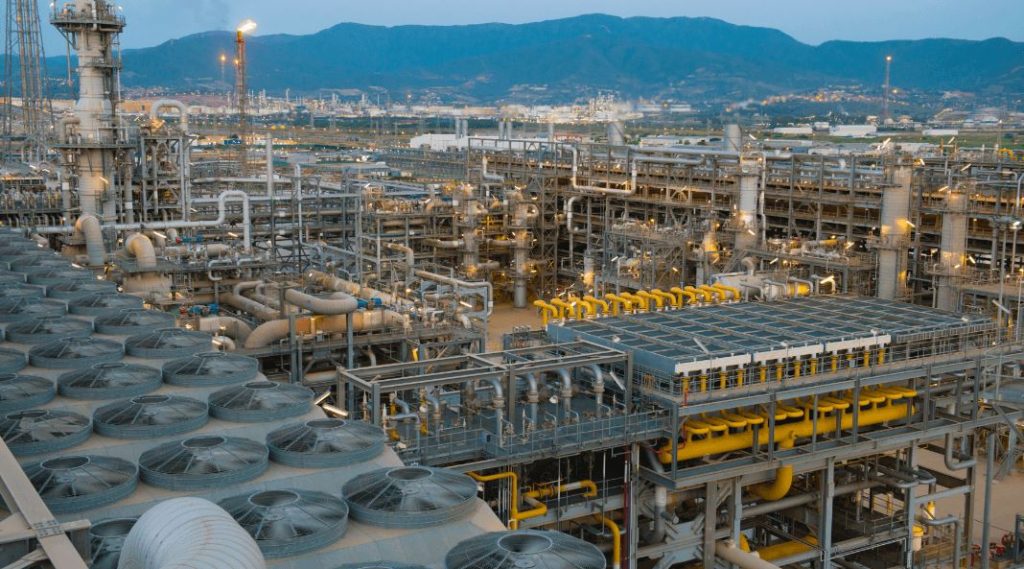Gas liquefaction capacity across Africa continues its steady ascent, as a growing number of nations accelerate investments in liquefied natural gas (LNG) export infrastructure to secure their place in the global energy arena. Strategic geography and access to maritime routes bolster the continent’s ambitions.
According to a recent report consulted by the Washington-based energy research group « Attaqa« , eight countries now form the backbone of Africa’s LNG industry, collectively offering a liquefaction capacity of 75 million tonnes per annum by the close of 2024.
This represents nearly 15% of the projected global capacity—estimated at 492 million tonnes for the same year—including 14 million tonnes produced by floating liquefaction units (FLNGs).
Capacity Climb in 2025
By early 2025, African capacity had risen to 77.3 million tonnes annually, boosted by the launch of the first phase of the Tortue-Ahmeyim project, located offshore between Mauritania and Senegal. The development contributes an additional 2.3 million tonnes per year.
Yet despite this progress, Africa’s LNG exports saw a dip, falling to 38.85 million tonnes in 2024 from 41.32 million tonnes the previous year, according to the « 2024 Update on Arab and Global LNG Markets ». This downward trend persisted into Q1 2025, with exports reaching only 8.88 million tonnes—down from 9.93 million a year earlier—due to Egypt’s return to import status and a cutback in Algerian exports.
Africa’s LNG Powerhouses in 2024
Looking ahead, forecasts suggest that Africa could account for 19% of global liquefaction capacity by 2050—out of a projected 1.004 billion tonnes—thanks to megaprojects underway in Mozambique, Nigeria, Senegal, and Mauritania.
The 2024 annual report from the International Group of LNG Importers (GIIGNL) ranks Africa’s top five LNG producers by liquefaction capacity as follows:
1. Algeria – 25.3 million tonnes/year
2. Nigeria – 22.2 million tonnes/year
3. Egypt – 12.2 million tonnes/year
4. Angola – 5.2 million tonnes/year
5. Equatorial Guinea – 3.7 million tonnes/year
Algeria in the Spotlight
With four major facilities operated by national energy giant Sonatrach—located in Skikda and Arzew—Algeria firmly leads the continent. The GL1Z and GL2Z complexes in Arzew account for a combined 16.1 million tonnes, while the Skikda plant contributes an additional 4.5 million tonnes.
Nigeria Close Behind
Nigeria’s operations, centered on Bonny Island, encompass six LNG trains with a combined capacity of 22.2 million tonnes, of which 8.2 million tonnes for the units T4 and T5.
Egypt Under Strain
Despite possessing 12.2 million tonnes of liquefaction capacity—via the Damietta and Idku plants—Egypt was forced to import around 4 million tonnes of LNG between June 2024 and April 2025, a consequence of declining domestic gas production.
Newcomers on the Scene
Mauritania officially joined the ranks of LNG exporters in January 2025, with the inauguration of the Tortue-Ahmeyim facility, adding 2.3 million tonnes to Africa’s tally. Mozambique, meanwhile, has been operating the Coral South FLNG since November 2022, with a capacity of 3.4 million tonnes.
A Global Outlook
Amid ongoing expansions across Africa, North America, and beyond, global LNG liquefaction capacity is projected to reach 515.6 million tonnes by the end of 2025, according to the (OAPEC).
Africa’s role in the global LNG landscape is thus growing ever more prominent. While Algeria remains the continent’s unchallenged frontrunner, intensifying regional competition and mounting logistical challenges signal that the energy chessboard is far from static—and the next moves could reshape the global balance.

